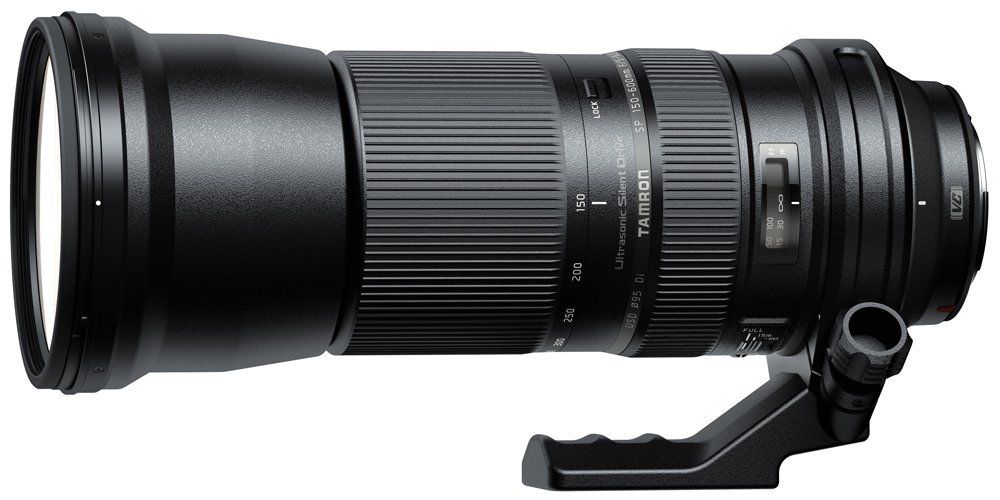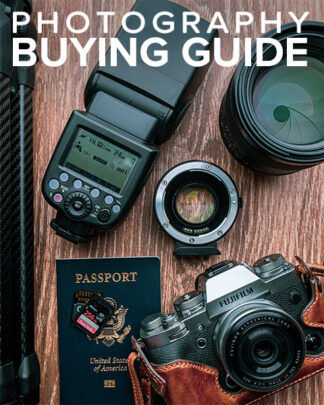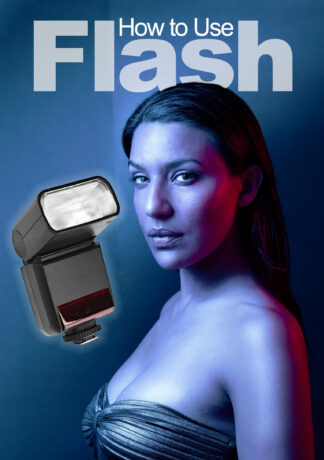 Most people shop for lenses by looking at the manufacturer’s advertised focal length and f/stop. Then, they check for features, like whether a lens has image stabilization. Tamron’s figured this out, and they’ve created a very marketable lens: a 150-600mm lens with image stabilization for about $1,000. That sounds like an amazing value. It’s not. For most people, especially those who want sharp pictures of faraway subjects like birds, there are far better options. At the $1,00 price point, we found that the Canon 400mm f/5.6 prime was sharper, even when cropped to match 500mm and 600mm on the Tamron. The Canon prime is also smaller, lighter, and better built, which is SO important for those of us hiking distances to track animals and then hand-holding the lens for extended periods of time. The prime’s f/5.6 is faster than the f/6.3 the Tamron uses at the long end, gathering more light and allowing you to use a lower ISO and thus get cleaner images. The Canon’s not a zoom–but our videos demonstrate that you can crop from 400mm all the way to 600mm and still get sharper pictures, so for the sake of your actual results, consider the Canon 400mm prime to be a 400-700mm f/5.6 zoom. If you need the 150-400 range, clearly, the Tamron is your only choice–you can’t crop wider. The Tamron also has image stabilization, which the Canon 400mm f/5.6 lacks. However, in our real-world testing, we found the lightweight Canon to be much easier to handhold than the Tamron, allowing us to break the reciprocal rule. Image stabilization doesn’t matter for moving subjects, where you need to use a high shutter speed. In those situations, the faster f/stop of the prime helps. For best results with this lens, stop it down to f/11. Realistically, that’s not often doable. When you’re working at 600mm, you’re taking pictures of wildlife or sports, where you need to use a fast shutter speed. So, increasing the f/stop from f/5.6 to f/11 requires you to raise the ISO two stops, giving you 4x noisier images… and that also reduces your sharpness. DxOMark’s sharpness chart objectively shows what our real-world tests demonstrated–the sharpness of this lens is just OK at shorter focal lengths, and gets really bad beyond 500mm:
Most people shop for lenses by looking at the manufacturer’s advertised focal length and f/stop. Then, they check for features, like whether a lens has image stabilization. Tamron’s figured this out, and they’ve created a very marketable lens: a 150-600mm lens with image stabilization for about $1,000. That sounds like an amazing value. It’s not. For most people, especially those who want sharp pictures of faraway subjects like birds, there are far better options. At the $1,00 price point, we found that the Canon 400mm f/5.6 prime was sharper, even when cropped to match 500mm and 600mm on the Tamron. The Canon prime is also smaller, lighter, and better built, which is SO important for those of us hiking distances to track animals and then hand-holding the lens for extended periods of time. The prime’s f/5.6 is faster than the f/6.3 the Tamron uses at the long end, gathering more light and allowing you to use a lower ISO and thus get cleaner images. The Canon’s not a zoom–but our videos demonstrate that you can crop from 400mm all the way to 600mm and still get sharper pictures, so for the sake of your actual results, consider the Canon 400mm prime to be a 400-700mm f/5.6 zoom. If you need the 150-400 range, clearly, the Tamron is your only choice–you can’t crop wider. The Tamron also has image stabilization, which the Canon 400mm f/5.6 lacks. However, in our real-world testing, we found the lightweight Canon to be much easier to handhold than the Tamron, allowing us to break the reciprocal rule. Image stabilization doesn’t matter for moving subjects, where you need to use a high shutter speed. In those situations, the faster f/stop of the prime helps. For best results with this lens, stop it down to f/11. Realistically, that’s not often doable. When you’re working at 600mm, you’re taking pictures of wildlife or sports, where you need to use a fast shutter speed. So, increasing the f/stop from f/5.6 to f/11 requires you to raise the ISO two stops, giving you 4x noisier images… and that also reduces your sharpness. DxOMark’s sharpness chart objectively shows what our real-world tests demonstrated–the sharpness of this lens is just OK at shorter focal lengths, and gets really bad beyond 500mm:  Here’s the sharpness at 600mm and f/6.3. The pale green means “pretty bad” while the yellow means “unusable”:
Here’s the sharpness at 600mm and f/6.3. The pale green means “pretty bad” while the yellow means “unusable”:  Here’s 600mm at f/11. You can see it gets much better:
Here’s 600mm at f/11. You can see it gets much better:  Unfortunately, DxOMark hasn’t tested the competing lenses, but we did in both our video tests, so watch those for more information. As you can see, we’re not fans of the Tamron… but if it’s so bad, how do you explain all those great pictures taken with it? I discuss this concept at length in the following video, but in a nutshell, gear just isn’t as important to wildlife photography as people think. The most important factor is the amount of time you put it, and then how close you to get to the birds. So, yes, people can get great shots with the Tamron, but that doesn’t mean it’s a great lens. The photographer deserves the credit for those pictures–if they had used a different lens, their pictures would have turned out even sharper. https://www.youtube.com/watch?v=_o2OGTVEVB0 If you need a zoom (and most wildlife photographers don’t), you have two other options: the Sigma 150-600 and the Canon 100-400 L IS II. Both are twice the price, and worth it–we found them to be significantly sharper and better built. The original Canon 100-400 L IS I is also available for about $1,000, but it’s a terribly unsharp lens at 400mm, so we don’t recommend it. Unfortunately, we haven’t objectively tested the Tamron 150-600 against the competing Nikon lenses. However, we tend to recommend the Nikon 300mm f/4 (either the new model or the old model, depending on your budget) and a 1.4X teleconverter over the big zoom. Here’s an earlier video comparison with a different sample of the Tamron: https://www.youtube.com/watch?v=1fmMG5jgDwk
Unfortunately, DxOMark hasn’t tested the competing lenses, but we did in both our video tests, so watch those for more information. As you can see, we’re not fans of the Tamron… but if it’s so bad, how do you explain all those great pictures taken with it? I discuss this concept at length in the following video, but in a nutshell, gear just isn’t as important to wildlife photography as people think. The most important factor is the amount of time you put it, and then how close you to get to the birds. So, yes, people can get great shots with the Tamron, but that doesn’t mean it’s a great lens. The photographer deserves the credit for those pictures–if they had used a different lens, their pictures would have turned out even sharper. https://www.youtube.com/watch?v=_o2OGTVEVB0 If you need a zoom (and most wildlife photographers don’t), you have two other options: the Sigma 150-600 and the Canon 100-400 L IS II. Both are twice the price, and worth it–we found them to be significantly sharper and better built. The original Canon 100-400 L IS I is also available for about $1,000, but it’s a terribly unsharp lens at 400mm, so we don’t recommend it. Unfortunately, we haven’t objectively tested the Tamron 150-600 against the competing Nikon lenses. However, we tend to recommend the Nikon 300mm f/4 (either the new model or the old model, depending on your budget) and a 1.4X teleconverter over the big zoom. Here’s an earlier video comparison with a different sample of the Tamron: https://www.youtube.com/watch?v=1fmMG5jgDwk






